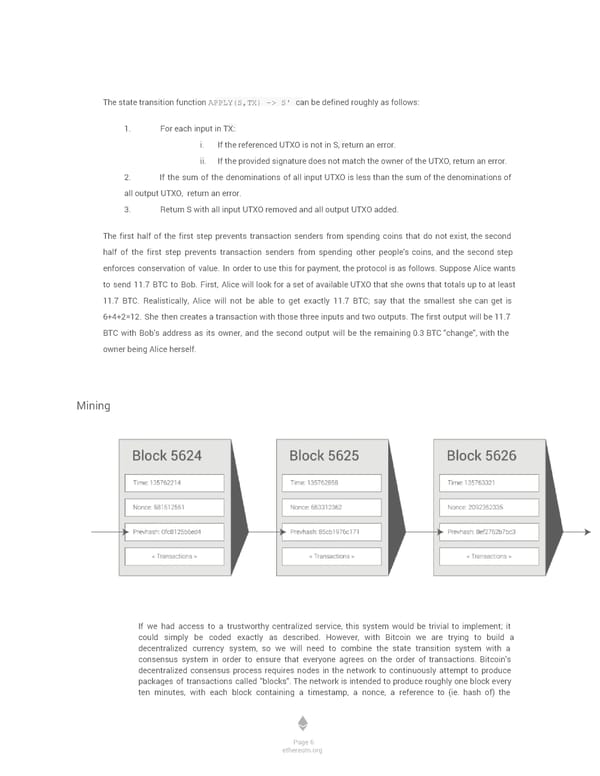The state transition function APPLY(S,TX) > S' can be defined roughly as follows: 1. For each input in TX: i. If the referenced UTXO is not in S, return an error. ii. If the provided signature does not match the owner of the UTXO, return an error. 2. If the sum of the denominations of all input UTXO is less than the sum of the denominations of all output UTXO, return an error. 3. Return S with all input UTXO removed and all output UTXO added. The first half of the first step prevents transaction senders from spending coins that do not exist, the second half of the first step prevents transaction senders from spending other people's coins, and the second step enforces conservation of value. In order to use this for payment, the protocol is as follows. Suppose Alice wants to send 11.7 BTC to Bob. First, Alice will look for a set of available UTXO that she owns that totals up to at least 11.7 BTC. Realistically, Alice will not be able to get exactly 11.7 BTC; say that the smallest she can get is 6+4+2=12. She then creates a transaction with those three inputs and two outputs. The first output will be 11.7 BTC with Bob's address as its owner, and the second output will be the remaining 0.3 BTC "change", with the owner being Alice herself. Mining If we had access to a trustworthy centralized service, this system would be trivial to implement; it could simply be coded exactly as described. However, with Bitcoin we are trying to build a decentralized currency system, so we will need to combine the state transition system with a consensus system in order to ensure that everyone agrees on the order of transactions. Bitcoin's decentralized consensus process requires nodes in the network to continuously attempt to produce packages of transactions called "blocks". The network is intended to produce roughly one block every ten minutes, with each block containing a timestamp, a nonce, a reference to (ie. hash of) the Page 6 ethereum.org
 Ethereum White Paper by Vitalik Buterin Page 6 Page 8
Ethereum White Paper by Vitalik Buterin Page 6 Page 8